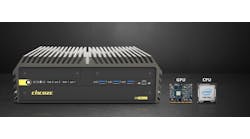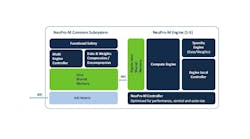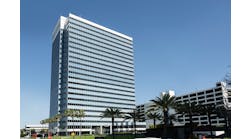Our panel of seven industry experts tackle the tough questions about the future of enclosures and how industrial PCs are affecting machine design.
The plant-floor HMI function is often performed using an industrial PC, typically one that's been placed inside an industrial enclosure. What sorts of considerations do machine builders need to make for this type of configuration when enclosure space is at a premium?
Modular enclosures provide optimum cable management, which can save up to 50% of space within an enclosure because cables can enter from all sides—roof, sides, base—while keeping maximum protection. In addition, cooling systems can be mounted on any roof or side to maximize space efficiency.
Steve Sullivan is training supervisor at Rittal
More and more customization drives the final configuration, also the change from manual buttons to software applications pushing the productivity up overall. That recovers valuable panel space once reserved for manual buttons and switches.
Tim Stone is HMI product sales manager at Advantech
One of the foremost considerations for machine builders when choosing an industrial PC (IPC) is form factor. Devices such as DIN-rail-mounted embedded PCs and panel PCs that combine a high-performance IPC for automation with an industrial display for HMI can offer attractive options when space is at a premium. One might think that moving to a smaller footprint would require a sacrifice in performance, but this is certainly not the case. If a machine builder seeks the means to remove the cabinet altogether, panel PCs offer another attractive benefit by providing PC-based control with the display in a streamlined package. Panel PC models with protection ratings up to IP65 make them suitable for highly demanding applications.
Eric Reiner is industrial PC market specialist at Beckhoff Automation
The first enclosure consideration is whether you want a standalone IPC in the cabinet, an integrated IPC/HMI/automation controller with mounted flush on the machine frame or cabinet face with the electronics behind, or a sealed, arm-mounted HMI with or without attached IPC/controller.
If the priority consideration is cabinet space, it’s logical to go with the second or third choice. Since you can also mount motor/drives, drives and I/O outside the cabinet, it’s possible to shrink the cabinet substantially. But there is an inherent space saving just having a single box that can serve multiple control functions, as well as IPC even if it is inside the cabinet.
And they are all getting smaller. CFast cards and internal solid-state memory are highly compact. Fanless IPCs are now commonplace.
Consolidating the cabling used between a cabinet-mounted IPC and display can also make a difference in space. And that includes replacing hardwired safety with networked safety cabling.
Using the minimum number of slots to get the job done will also save cabinet space, while adding slots to a single, powerful IPC can also reduce cabinet size by replacing multiple standalone devices. Swing arm mounted panels can be used as IPC/HMI or remote HMI only.
John Kowal is director of business development at B&R Industrial Automation
Chris Mason is product manager, industrial computers, at Rockwell Automation
First and foremost, machine builders must evaluate airflow—can you use a fanless PC? And, if so, how does the fanless PC live up to its full temperature range when installed in a static environment without air flow? Some embedded PC manufacturers take liberties with their rating specs and take into consideration some nominal amount of airflow to achieve the spec.
Second, it’s important the enclosure is rated for the environment. If used in a hazardous location, all entry and exit points need to either be in conduit or use special types of cables rated for no conduit use. Energy and power traveling through cables, and not in a conduit, need to meet another set of controlled specifications.
Third, due to the advancement of electronics in terms of compute power and efficiency, it is possible now, more than ever, to achieve higher levels of performance in these environments. With the shrinking size and smaller footprint of today’s compute engines, it can be tempting to simply throw more things into the enclosure along with the computer. However, careful attention should be paid to the devices installed along with the computer as they can lead to excess heat buildup or even electronic noise in the enclosure.
Joe Bastulli is business development manager, embedded computing, at Dell
Many of the small industrial PCs will come with a standard brick-style power supply—19.1 Vdc. It may be advantageous to find a PC that uses standard power found in industrial control cabinets—12 or 24 Vdc.
If modularity is not required, then panel PCs provide a good alternative in saving space, while at the same time having internal connections to what may have had to be wired in the cabinet.
Mark Lovell is proposals manager at Pepperl+Fuchs
ALSO READ: Control panel design starts with the basics
This is part one in a series about IPCs and enclosures. Read part two here and part three here.
Mike Bacidore is the editor in chief for Control Design magazine. He is an award-winning columnist, earning a Gold Regional Award and a Silver National Award from the American Society of Business Publication Editors. Email him at [email protected].
Homepage graphic courtesy of Stuart Miles at FreeDigitalPhotos.net













